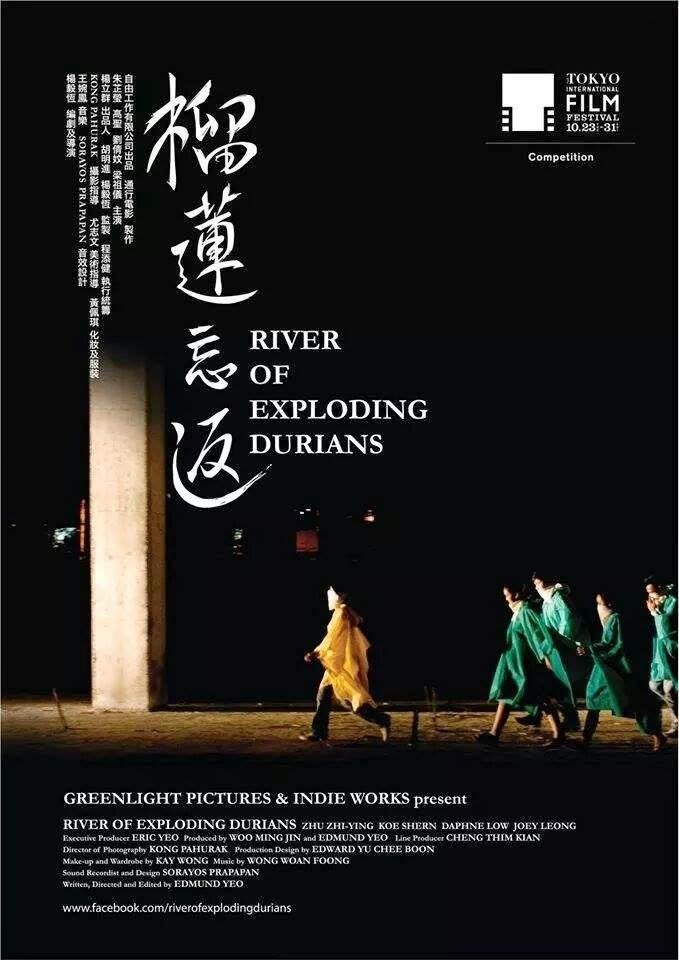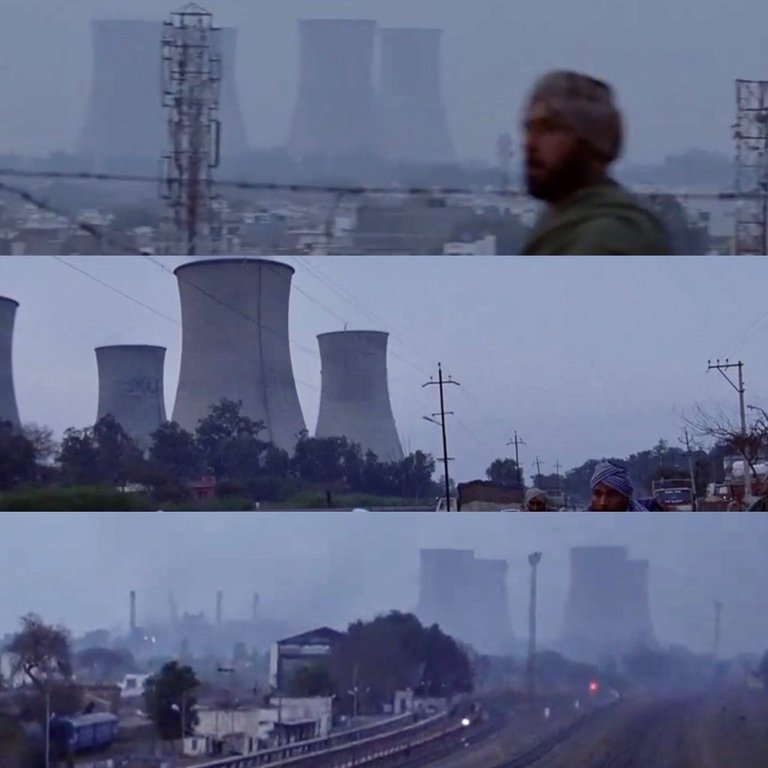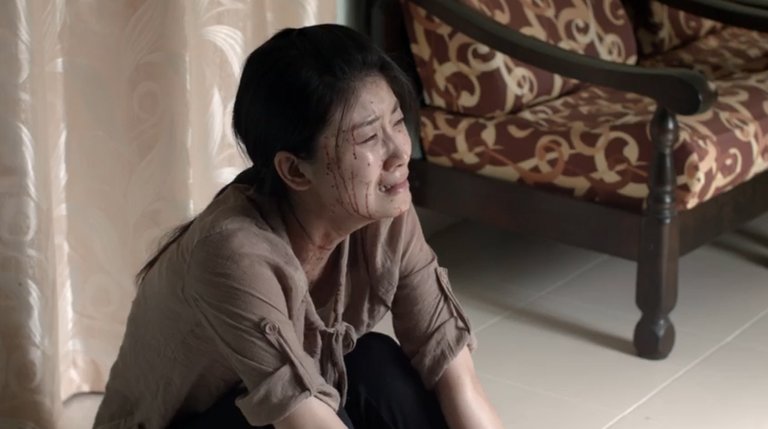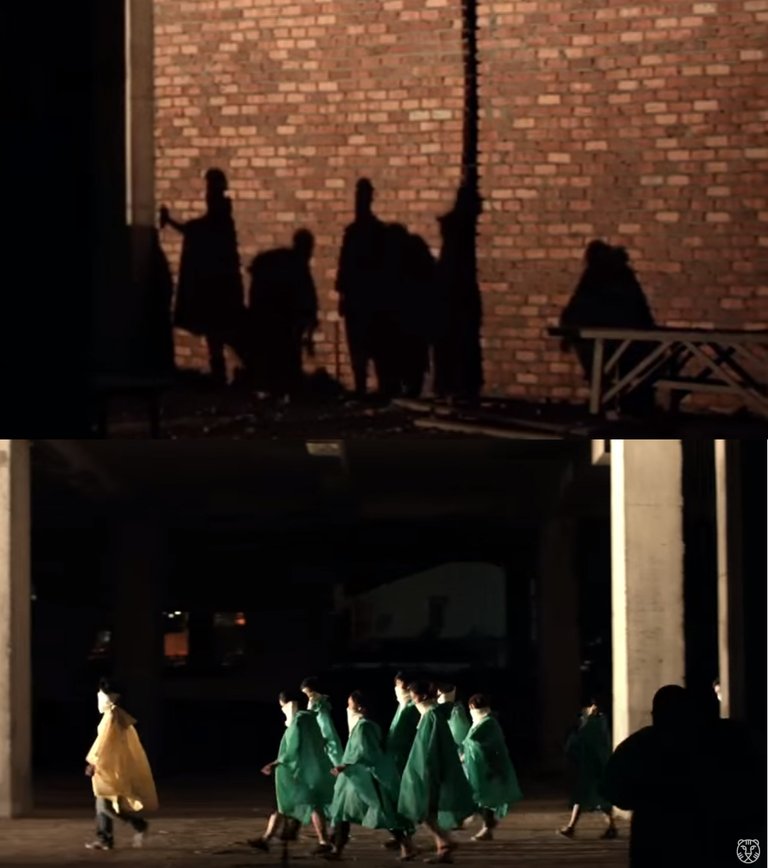
It has been quite a while since the last time I wrote a film review. My last review was on ‘Alms for the Blind Horse’ back in June. I was going through Pak Hassan Muthalib list of a-must-watch on a newly released platform, MUBI. While I was over a couple of them, I bumped into a Facebook post about a Malaysian film called ‘River of Exploding Durians’ by Edmund Yeo on its last day of show. I wasted no time and managed to catch it before midnight.
Because it was a little bit slow-paced and after a typical weekday's work, I fell asleep everywhere. Thus I was trying to get another shot at it but couldn’t find it anywhere. Thank god for Facebook (again) though, I managed to have a chat with the writer and director, Mr. Edmund Yeo. Told him indirectly about my intent and he kindly got me an online link to the film. Thus in return, I've promised him a review (noob).
Fast forward to 2 months (yes, that long), here I am finally writing about it. It took that long because my viewing of the film coincided with a huge stack of books that I have acquired from Pak Hassan Muthalib during his generous books give-away fest. I had the luck to go for three trips and going through the books I have learned some new things and it contributed to my (noob) understanding of this film. So here goes.
The questions
The title itself boggles the mind. What could it all mean? Why would there be a river flowing with durians? How they got exploded and why? I reckoned that the only way to get the answer is to re-watch the film (since I have the online link...and to do it without falling asleep). So during my re-watch, I was focused on just that. Looking at the durians and what they are trying to say.
There are scenes of them floating on dirty water, getting stacked and put on fire. Then there are scenes of the characters eating and enjoying them in groups. Also, there are scenes where the sound of explosions heard, interrupting the ongoing lesson in a school class.
So someone is blowing up durians and dumping the waste into the rivers. Someone from Malaysia, where durians are famous for, hating the durians so much to do just that?
Why?
From the character Hui Ling, a Chinese school girl and a class monitor, who is going around the school collecting signatures to protest against the rare earth mining plant that is in construction in their town, I now know that it is the source of the explosion, and where the durians have been laid to waste.
While their history teacher, Ms. Lim has always gone out of the syllabus to talk about historical rebellions in other Asian countries, namely the Thammasat University Massacre. This might have give Hui Ling the drive to influence other classmates to sign up in protest against the rare earth mining plant’s construction.
Ms. Lim is also the leader of the protest, even after warnings from the school headmistress. But why Ms. Lim is so concerned about the rare earth mining plant? Why does she call for students to join her fight?
The mentor and the durians.....and film
In one lesson, Ms. Lim explains the similarity between history and films (also I think, indirectly talking to the viewers) She says history is a form of narrative and historical figures are like heroes in films. She further says that we always imagine ourselves as the lead characters and their feelings become our own. We empathize.
In one of the books Pak Hassan Muthalib lends me, ‘Doing philosophy at the movies' by Richard A. Gilmore, he says “to go to the movies philosophically is to become a protagonist oneself”. This is where I started to look at it from a philosophical perspective, especially a film with a title such as this one (categorized as ‘Drama’ in IMDb), and only then things start to make sense.

After putting myself in the place of Ms. Lim, Ming and Hui Ling, it is pretty obvious to me that it is a part of social commentary on the Chinese community in Malaysia. The popular myth among the non-Chinese that they are all rich and living easy lives.
While the durians are exclusively Malaysian where I can safely say 99% of the population (including the characters) enjoy feasting on them. Thus I think it is being used as an allegory or metaphor of unity and prosperity between races in Malaysia.
And also as a symbol of the love of being a Malaysian. To peel through the thorny shell. To ignore the nauseating smell of it and feast on the buttery sweetness. Scenes, where you see characters enjoying their durians, are saying that they want to be Malaysians and ready to peel through the thorny skins together.
But someone is setting up a plant to stop them from eating the "durians" and profit from it. Akin to the opportunist politicians setting up hate propaganda for them keep hold to their political post so they can milk every single penny out of the public coffers for themselves and their followers. Those who resist will be eliminated.
The Villian
The rare earth mining plant is where all the precious fillings of durians are taken out and the waste is being thrown away into the rivers and ocean. The wastes are made visible in a number of scenes to the main characters. To Ms. Lim, Ming, Mei Ann and Hui Ling. That is a message of rejection directed to them. The Malaysian Chinese.
"No, You Cannot eat the Durians!" is kind of like what it's saying. Akin to what we always hear from them - "Kaum Pendatang". But the background story of all the characters saying that they are born here and planning to stay and die here because it is their home and they love it.
Like how Mei Ann wish to travel to Ipoh and Melaka and feast on the local delicacies. Like how Ming's father a taxi driver is willing to go through the hardship here and reject the idea of going somewhere else. Like how Hui Ling grab hold of her young self that went through a tough childhood.
The scene when Hui Ling and Ms. Lim are eating durians together. There is some sort of reluctance coming from Ms. Lim. It comes at the same time when she recalls how she used to hate durians while her parents and siblings enjoy them. She ended up joining them but still hating durians. But in that scene, the durians came from the one she kept at home. Apparently at one point back then she changed.
Hui Ling then asked Ms. Lim when did it happen (and also probably how).
Ms. Ling never answered.
Perhaps it one of her bad memories? Perhaps something happened to her husband. All her books are inherited from him. Was he fighting the same people who are building the plant? Is Ms Ling plotting revenge?

A villain such as a factory plant in 'Alms for the Blind Horse' that brought industrialism and splitting the Punjabis apart, even though wearing the same turbans and speaking the same language. It just looms in the background saying nothing and making no sound. Yet the effect on the social landscape is shown throughout the movie.
For her students, Ms. Lim plays the mentor and leading the way. Taking lessons from the Thammasat University Massacre in Thailand and the story of Liliosa Hilao in the Philippines, she is teaching them the parallel between those stories to what they are getting from the rare earth mining plant and rallying them into protesting.
The Encounter
The villain here is the plant manager in a form of a dark-skinned man speaking in Malay and very persuasive, like a politician. The reason is that he got Ms. Lim pointing a gun at his head.

The malay-speaking man tried to bargain.
Ms. Lim had enough and pulled the trigger.
Just like the main male character in Metro Maalai. Only when I started writing the review I noticed that he is actually unnamed. I can only remember his character and what he did in the film. The same goes with the Unnamed Malay Man.
I think what he represents goes without saying.
And Ms. Lim takes her own life with one on the head too. Is it because her job is done? Had she been plotting revenge all this while? Is the Unnamed Malay Man guilty of her husband's demise?
It is also a strong show of character by taking out her own life for the story to go on. Doing it near a clear waterfall might be saying she is purifying herself before she goes away and her job is done. Maybe that is another meaning of 'River of Exploding Durians'.
Ms. Lim (along with other Chinese characters) is a durian (Malaysian) herself. And this is not the first durian got exploded in the river. Maybe that is also how her late husband died.
As she was playing the mentor character in her own film, the baton is then passed to Ming and Hui Ling to continue the fight. Maybe it's the fight for the right to be 'durians'. (Malaysians).

The Apprentices
While Ming's character arc is going upward, Mei Ann's arc is going downward. From what I can see, it is to make way for the entrance of Hui Ling into Ming's life.
Ming went through a full hero's arc from being a student who never paid attention in class into a character that ended up on top of the green hills in Cameron Highlands, escaping from the memories of his lost childhood love, Mei Ann.
Mei Ann's character is a tragedy. She lived her childhood in the same green hills of Cameron Highlands. Her father's decision to be a fisherman and move to the lower ground hasn’t been kind to their life. In a turn of events, Mei Ann is pregnant with a rich Chinese businessman's baby. The arrival of the plant polluting the water and affecting her father’s catch doesn’t do them anything good. Her whole family then moved to somewhere undisclosed, away from all the eyes of the judgmental people around them.
In the closing scene, both Ming (who had lost Mei Ann) and Hui Ling met during the Nine God's Festival perhaps as a symbol of hope and with spiritual blessing, taking on the fight for the future. Their meet-up is a pleasant one, reading from their facial expression. As if it's their first time seeing each other despite being classmates.
As Rumi said, "Lovers don't finally meet somewhere, They are in each other all the time." They are now vibrating on the same frequency.

The interludes
Despite being categorized as ‘Drama’ in IMDb, the inclusion of 'interludes' to me has taken it to a different level and has added subtext. The director and writer Edmund Yeo invite the viewers to “to go to the movies philosophically" to figure out the meaning of these interludes (if that is what you call them). If you managed to take yourself to "become a protagonist oneself”, you would then understand the plight the characters are facing and the true message of the film.
These interludes are without any verbal interchange and just the sound of the elements. Close to being dreamlike and mythical, in the film sense. In 'Anatomy of Film, Bernard F.Dick says "Although myth is usually identified as falsehood in the popular mind, in film and literary criticism, it has another meaning altogether." William York Tindall defined myth as, "a dreamlike narrative in which the individual's central concerns are united with society, time and the universe."

For example, in the opening of the film, Mei Ann and Ming bumped into durians shells scattered on the ground and a body of a dead wild boar swarmed with flies. Another example, Ming looked at the group of men dressed like soldiers walking in a swamp looking for durian shells and upon finding them, stacked them up and put them on fire.
The inclusion of natural watery elements such as beaches, rivers, ponds, and waterfalls in most of the scenes whether it's calm or stormy. In 'The Art of Storytelling', Nancy Mellon states an example on swamps and bogs as being in "...stagnation, stenches...miasmic whisperings and boomings may fill the air... and no firm foothold." which also where durian shells found afloats in many of the 'interludes'.
Mei Ann rough life is shown in a scene where lanterns were lit by a stormy beach at night. She was a small girl back then and was there with Ming. The inclusion of a mystical element adds to the depth when her father recalled a Master Lai foresees that Mei Ann's life is going to be a tough one but she will eventually find the light. Even though earlier I have said that her final fate is unknown (unlike Ming who got elevated to the top of the hills), this might have given some clues.
Near the end, Ming is shown to have been awakened from a dream and a slumber and a ghostly figure of Mei Ann walks away. Could be a sign that he has fully awaken and ready to the elevated.
There is also a clear reason why school students are being used to play apprentices. Partly because it is to sync with other Asian rebel stories and also to symbolize hope in the young generation. It is also clearly criticizing the education system with the dirty walls in what seems like an abandoned school building. In the end, before Ming moved on after the demise of Ms. Lim, he made a mess of his classroom desk and chair and put it on fire.

It is a subtle social criticism towards that particular ‘Malaysian’ political value. Being subtle is how the Malays of old criticize (a rare sight in this internet age). Having it delivered in Mandarin that criticism here is further hidden behind the subtext. It is clear to who the message of the film is directed.
Being literal about it might attract the wrong attention of the wrong people. Plus, isn’t that what films supposed to be? It is perhaps because of the subtext is why the message of this film is lost to many. Might that be a vindication of some sort?
Anyways, if it is a call to stand up and retaliate, it should be encrypted.
And could this film also be talking about the Malaysian very own sublime, as to how the American counterpart is portrayed in the classic film Fargo?
Maybe the Malaysian sublime can sound like this. Instead of green for durian skin, it is green for 'kataks' and instead of yellow for the durian flesh, it's yellow for shit!
Send the durian squad and blow up the 'kataks'!
